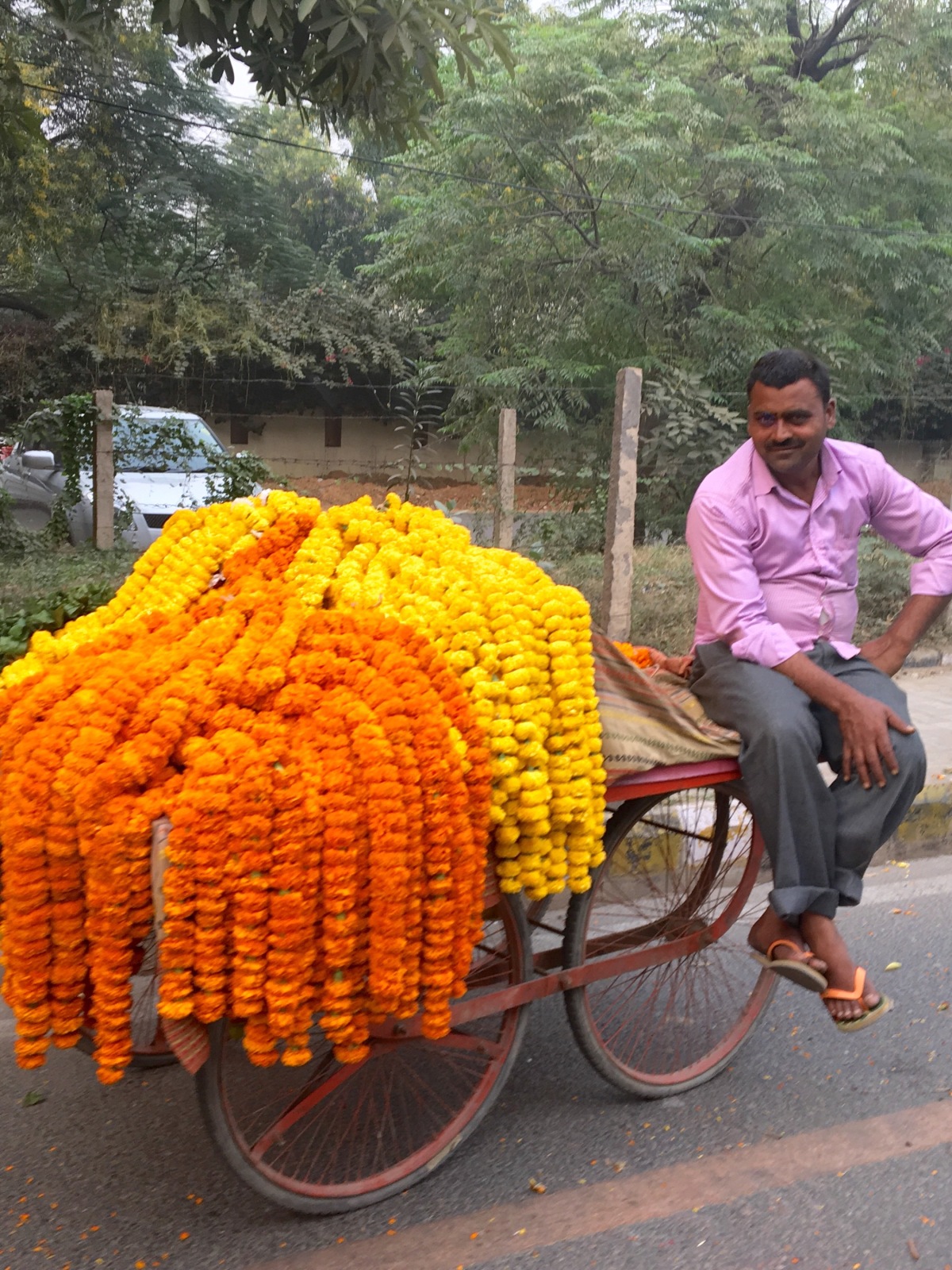Diwali is the most important holiday of India (and some surrounding countries.) It’s like a mix of Christmas and the 4th of July. It is a 5 day holiday known as the Indian Festival of Lights. On the 5th night they light candles, pray, eat, exchange gifts and have ceremonies requesting blessings of prosperity. It is a holy time for families but has become very commercialized in recent years. These days it seems to be mostly about shopping (like Black Friday in the states), exchanging gifts (like Christmas), lighting fireworks (like 4th if July) and eating sweets. They also hang lots of lights throughout the city and decorate their homes with strings of colorful lights and flowers. Flower and pastry vendors are everywhere and the TV commercials are all about special Diwali sales. Sound familiar? There are many parties and festivities. Diwali fireworks were everywhere and continued into the early hours of the morning. It was quite impressive, but the pollution in the morning from the fireworks was awful!! Oh well. Here are 8 ways to celebrate Diwali.
Crackers (Fireworks)
Indians start lighting Diwali fireworks at least a good week before Diwali. There doesn’t seem to be any regulation, so crackers are let off until wee hours of the morning. The sky gets very polluted from the smoke. As a result, the day after Diwali the air quality index was so bad they recommended staying indoors.
Rangoli
Rangoli is a type of art that comes from ancient Nepal. The artist draws on the floor using materials such as colored chalk, rice, dry flour, colored sand or tiny flower petals. They are drawn free hand and can take many hours to complete. It is one of the most common Diwali decorations.
 Rangoli: This one was about 6 feet around.
Rangoli: This one was about 6 feet around.
Lights
Much like Christmas in the USA, people like to decorate with strands of colorful lights. They range from fancy LEDs to old style bulbs. However, unlike the USA, Indians tend to string them vertically instead of horizontally. Lights are important Diwali decorations.

Picture of Diwali lights from Palm Springs Apartments, Gurgaon.
Parties
I was invited to a lovely party at a friend’s yoga studio. We had to dress up formal but it was worth it. We had a really fun night playing cards and listening to music and I was honored to be part of it.
Food
Food was everywhere during Diwali. The Indian people love their sweets and share them with each other at parties or in the office. We enjoyed everything from Jalebi, which is a deep-fried flour substance soaked in a sugary syrup, to Gulab, a deep-fried ball of milk solids also drenched in a sugar syrup.
Gifts
It is common to exchange gifts during Diwali. Much like Christmas, the list can be long. We gave our employees and client’s gifts. Typically families, friends and coworkers also exchange gifts. There are lots of Diwali sales that entice you into spending more than you wanted to.
Festivals
There are many cultural celebrations throughout the city where the public can celebrate together. Schools, government and organizations often throw extravagant events during Diwali.
Time Off
Productivity declines during Diwali because so many people take time off to travel back home and spend precious time with their loved ones. It is also a government sanctioned holiday so typically employees are given a paid day of leave, sometimes two.
Diwali is a special time for Indians. Mostly it’s about spending time with family and friends. Holiday cheer is in the air and everyone, even c omplete strangers, wish each other a Happy Diwali.









According to the calendar I just looked at, there is some sort of hoiday or festival several times a week in India. I guess the trick is to continually convert among Hinduism, Buddhism, Islam and Christianity so you can claim them all!
Yes, there are many holidays, however, Dewali seems to be one of greater significance. Hopefully it will not cause delays to our project!